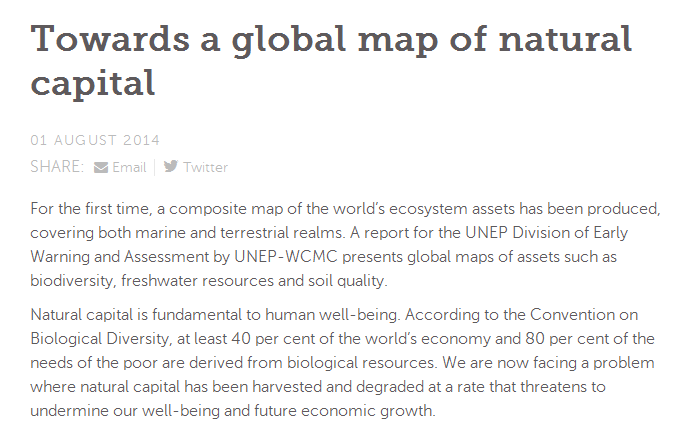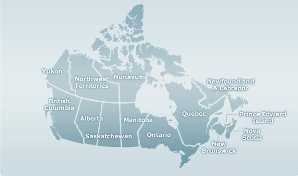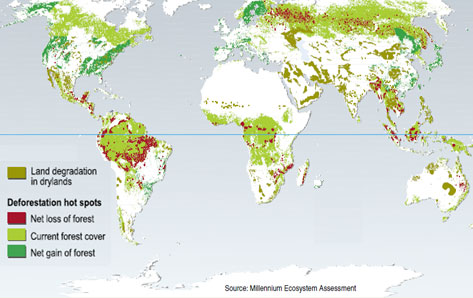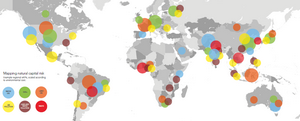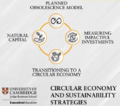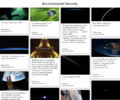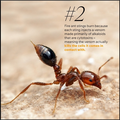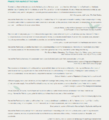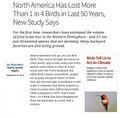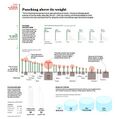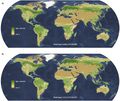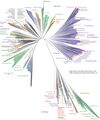Category:Natural Capital
<addthis />
- The Big Picture: The Business of Planet Earth
- A science -- and strategy -- of "eco-nomics" ...
See Eco-nomics -- http://www.greenpolicy360.net/w/Category:Eco-nomics
See Environmental Full-cost Accounting -- http://www.greenpolicy360.net/w/Environmental_full-cost_accounting
See Externalities -- http://www.greenpolicy360.net/w/Category:Externalities
See Natural Capital -- http://www.greenpolicy360.net/w/Natural_Capital
○ ○ ○ ○ ○ ○ ○ ○ ○ ○ ○ ○ ○ ○ ○ ○ ○ ○ ○ ○ ○ ○ ○ ○ ○ ○ ○ ○ ○ ○ ○ ○ ○ ○ ○ ○
○ ○ ○ ○
Natural Capital
- Sustainable Development Goals (SDGs) v GDP as measurement of 'progress'
- http://www.phys.org/news/2014-01-dethrone-gdp-national-success.html#inlRlv
- http://www.naturalcapitaldeclaration.org/
- http://www.naturalcapitaldeclaration.org/2012/08/global-footprint-network-supports-ncd/
- Ecological Footprint
- http://www.worlddialogue.org/content.php?id=512
Natural Capital (financing)
- Valuing natural capital systems +/- ecosystem services - http://www.phys.org/news/2014-05-environmental.html
- http://www.worldbank.org/en/news/2012/06/20/massive-show-support-action-natural-capital-accounting-rio-summit
○ ○ ○ ○
- (FB) https://www.facebook.com/pages/Natural-Capital-Initiative/132253866809725
- http://www.naturalcapitalinitiative.org.uk/links
- http://www.naturalcapitalinitiative.org.uk/news/
Accounting for Nature
"The question that accounting answers is: did this business maintain, create or deplete value over a particular time period (i.e. is the capital stock better off, worse or unchanged)? This is an important question to ask because we can see that, globally, we are depleting the natural capital stock at an alarming rate. You might think no-one would run their business on the basis of capital depletion and yet collectively we do because, economically, nature is invisible; it is not priced...
"Valuing things is not easy. We are beset with questions like: is value the same as price; value to whom; market price or replacement cost; present value of discounted cash flow, but at what rate? This is for things that we often assume are easy to value. When we try to value nature further challenges emerge.
"There isn’t space here to go into all of the challenges of valuation, but let’s just touch on a few. A good place to start is with the questions: should we put a monetary figure on nature; and, if so, what would we be valuing?
"There is also a question: does nature only have value in a human-centric way; does it not have intrinsic value as well? If there is an ecosystem somewhere that is not immediately linked to human benefit, is it worthless?
"But almost more importantly, if we think of a progression from qualitative review of natural capital to a quantitative assessment to a financial valuation, increasingly elements are left out, not because they are irrelevant or immaterial but because they can’t be quantified or valued. Paradoxically one could conceivably end up with a value that captures nothing one finds valuable. How, for example, do we capture the complexity and inter-connectivity of systems fundamental to our natural world? How do we value our mother or father? Surely the real value exists in the emotion we feel for them; how do you put a monetary value that?
"Developing from this there is an argument, heard loud and strong in civil society, which says we should not put a value on nature; that that simply commoditises it and diminishes its true value. Just because something is not quantifiable does not mean it is not important. A position that privileges what can be measured is open to placing quantity above quality; and most of us would question that arrangement. We have to take notice of the things we cannot measure. You can’t really measure truth or justice or freedom. Such an argument can be located within the wider debate of the extent to which we are creating a market society that puts everything up for sale and asks where the limits of that should be. An exposition of some of the thinking behind such a position is Michael Sandel’s What Money Can’t Buy.
As Sandel concludes: "The question of markets is really a question about how we want to live together. Do we want a society where everything is up for sale? Or are there certain moral and civic goods that markets do not honour and money cannot buy?"
○ ○ ○ ○
Natural Capital Mapping
Natural Capital (Mapping / Assessment app)
Google Outreach links with Suzuki Foundation / Prototype NatCap Mapping - Canada (video)
○ ○ ○ ○
- http://www.davidsuzuki.org/publications/downloads/2011/REPORT--BC_natcap_policy_review_web.pdf
- http://www.davidsuzuki.org/issues/wildlife-habitat/projects/natural-capital/
- http://www.davidsuzuki.org/issues/wildlife-habitat/projects/natural-capital/what-is-natural-capital/
- http://www.davidsuzuki.org/issues/wildlife-habitat/projects/natural-capital/putting-natural-capital-on-the-map/
○ ○ ○ ○
UN Millennium Ecosystem Assessment
United Nations Environment Programme / Division of Early Warning and Assessment
United Nations World Conservation Monitoring Centre
○ ○ ○ ○
Toward a Global Map of Natural Capital / UN
The concept of natural capital, which has its theoretical origins in the environmental economics of the 1990s, has experienced increased interest following the publication of the Millennium Ecosystem Assessment and the development of the ecosystem services approach.
In recent decades we have learned more about the ways in which nature provides vital life-support functions upon which we depend for our survival. The problem we face is that natural capital has been harvested or degraded at a rate that threatens to undermine both well-being and future economic growth (UNEP, 2007). Natural capital may be transformed to other types of capital, but even manufactured capital is formed from the resources found in nature.
The growing recognition that the environment plays a fundamental role in determining global economic outputs and human well-being has led to a range of responses, one of which is the integration of the value of natural capital into policy and decision making. As a consequence, governments around the world are grappling with how to better measure the success of their economies.
Work is being carried out by the World Bank, OECD, UN, EEA and others on developing methods to incorporate natural capital into national accounts.
○ ○ ○ ○ ○ ○ ○ ○
http://dotearth.blogs.nytimes.com/2010/10/28/world-bank-pushes-to-include-ecology-in-accounting/
World Bank Pushes to Include Ecology in Accounting
By Andrew C. Revkin
October 28, 2010 8:32 am October 28, 2010 8:32 am
This is certainly a novel, and hopeful, development. At the 10th conference of parties to the Convention on Biological Diversity, in Nagoya, Japan, Robert B. Zoellick, the president of the World Bank, called for the planet’s biological patrimony, its “natural capital,” to be included on nations’ books when they do their accounting. Here’s a highlight:
The natural wealth of nations should be a capital asset valued in combination with its financial capital, manufactured capital and human capital…. National accounts need to reflect the vital carbon storage services that forests provide and the coastal protection values that come from coral reefs and mangroves...
GP360: As Andrew, who is one of the best writers on the environmental world comments about this news: He'll believe it when he sees it happening. So will we at Green Policy.
The World Bank Group via Mr. Zoellick goes on:
[Y]ou might wonder, why is the World Bank attending a conference on biodiversity?
Our answer is clear: successful conservation of our natural resources, our ecosystems, and our biodiversity is central to addressing all development challenges and to improving the lives of the poor.
Biological resources provide livelihoods, sustenance, medicines, trade, tourism, industry, and more. Forests, grasslands, lakes, oceans, deserts, and other natural ecosystems provide a range of natural services that people have often taken for granted, even though they are vital to human welfare.
I would add one more consideration: each of us – all of us – are stewards of other life on this planet. We should respect those lives.
As a practical matter, we need to demonstrate the connections among overcoming poverty, sustainable economic growth, and the preservation of the planet’s rich natural heritage...
○ ○ ○ ○
Earth Systems Monitoring from Space
NASA Earth Observing System Data and Information System -- Maps
NASA Earth Sciences Invites Public to Join In
Earth Science Research from Space ○ ○ 'New Space' Earth Monitoring with Micro-satellites ○ ○ Planet Labs
Global Fishing Watch ○ ○ Global Forest Watch ○ ○ Google Earth Outreach ○ ○ Rebecca Moore and the Google Outreach team
New Definitions of National Security ↔ Environmental Security
○ ○ ○ ○ ○ ○ ○ ○ ○ ○ ○ ○ ○ ○ ○ ○ ○ ○ ○ ○ ○ ○ ○ ○ ○ ○ ○ ○ ○ ○ ○ ○ ○ ○ ○ ○ ○ ○ ○ ○ ○ ○ ○ ○ ○
April 2016
A new report by Trucost on behalf of The Economics of Ecosystems and Biodiversity (TEEB) program sponsored by United Nations Environmental Program, examined the money earned by the biggest industries on this planet, and then contrasted them with 100 different types of environmental costs. To make this easier, they turned these 100 categories into 6: water use, land use, greenhouse gas emissions, waste pollution, land pollution, and water pollution.
The report found that when you take the externalized costs into effect, essentially NONE of the industries was actually making a profit. The huge profit margins being made by the world’s most profitable industries (oil, meat, tobacco, mining, electronics) is being paid for against the future: we are trading long term sustainability for the benefit of shareholders.
Sometimes the environmental costs vastly outweighed revenue, meaning that these industries would be constantly losing money had they actually been paying for the ecological damage and strain they were causing.
In terms of land and water use: almost no companies are actually paying a price remotely comparable for what they are actually taking away from the ecosystems.
http://www.trucost.com/publications
http://www.teebweb.org/resources/useful-links/
http://www.teebweb.org/areas-of-work/teeb-for-business/
http://www.teebweb.org/our-publications/teeb-study-reports/business-and-enterprise/
_ _ _ _ _ _ _ _ _ _ _ _ _ _ _ _
Natural Capital Use Reports
http://www.teebweb.org/our-publications/teeb-study-reports/ecological-and-economic-foundations/
http://www.teebweb.org/our-publications/teeb-study-reports/national-and-international-policy-making/
http://www.teebweb.org/areas-of-work/advancing-natural-capital-accounting/
http://sustainableprosperity.ca/article3942
http://www.theguardian.com/sustainable-business/graphic/what-is-natural-capital-infographic
_ _ _ _ _ _ _ _ _ _ _ _ _ _ _ _ _ _ _ _ _ _ _ _ _ _ _ _ _ _ _ _ _ _ _ _ _
- Natural Capital Accounting: The Big Picture, Bottom Line
Environmental consultancy company Trucost, on behalf of The Economics of Ecosystems and Biodiversity (TEEB) program sponsored by United Nations Environmental Program, recently conducted an extensive study of global natural capital accounting.
TEEB asked Trucost to tally up the total “unpriced natural capital” consumed by the world’s top industrial sectors. (“Natural capital” refers to ecological materials and services like, say, clean water or a stable atmosphere; “unpriced” means that businesses don’t pay to consume them.)
It’s a huge task; obviously, doing it required a specific methodology that built in a series of assumptions. (Plenty of details in the report.) But it serves as an important signpost pointing the way to the truth about externalities.
Here’s how those costs break down:
The majority of unpriced natural capital costs are from greenhouse gas emissions (38%), followed by water use (25%), land use (24%), air pollution (7%), land and water pollution (5%), and waste (1%)
How much is that costing globally?
First, the total unpriced natural capital consumed by the more than 1,000 “global primary production and primary processing region-sectors” amounts to $7.3 trillion a year — 13 percent of 2009 global GDP.
Repeat -- 13% of global GDP
The majority of unpriced natural capital costs are from greenhouse gas emissions (38%), followed by water use (25%), land use (24%), air pollution (7%), land and water pollution (5%), and waste (1%)...
Consider the bigger picture, the Trucost/TEEB report as published by Mongabay
The Trucost report from the point of view of Fast Company
Ecological 'Ponzi scheme', from the Irish Times
World Economic Forum, Biodiversity and Natural Capital., 2012-2014
○ ○ ○ ○ ○ ○ ○ ○ ○ ○ ○ ○ ○ ○ ○ ○
Cycles of Production/Consumption
Definition "Unpriced Natural Capital"
Definition "Externalities" -- post production, societal and consumer costs unpaid for by producers, but paid for by 'consumers', 'societies', 'communities', e.g. air/water pollution, CO2 atmospheric emissions/climate change, sea-level rise, environmental impacts and 'loss of security'...
http://www.greenbiz.com/blog/2013/04/15/assessing-businesses-73-trillion-annual-cost-natural-capital
The message... “These are material issues, and they're not going to come in 50 years’ time. They’re here,” Richard Mattison, Trucost’s CEO, told me recently. “And you have to care about it now because it won’t require regulations to impose costs on businesses. It requires a change in the state of our natural resources, which is already happening.” (Trucost was GreenBiz Group’s partner in producing the 2013 State of Green Business Report.)
GP360: The Report is one of the first that looks at 'the big picture' as monitoring and assessing of national/regional/global natural resources proceeds with new 'eyes in the sky', space-based fleets of micro-satellites designed for civil and business use (as opposed to first-generation military-communication satellites).
See Earth Science from Space: Democratization of Space
Natural capital assets fall into two categories: those which are non-renewable and traded, such as fossil fuels and minerals; and those which provide finite renewable goods and services for which no price typically exists, such as clean air, groundwater and biodiversity.
According to Trucost:
During the past decade commodity prices erased a century-long decline in real terms, and risks are growing from over-exploitation of increasingly scarce, unpriced natural capital. Depletion of ecosystem goods and services, such as damages from climate change or land conversion, generates economic, social and environmental externalities. Growing business demand for natural capital, and falling supply due to environmental degradation and events such as drought, are contributing to natural resource constraints including water scarcity.
Government policies to address the challenge include environmental regulations and market-based instruments, which may internalize natural capital costs and lower the profitability of polluting activities. In the absence of regulation, these costs usually remain externalized unless an event such as drought causes rapid internalization through supply-chains through commodity price volatility; although the costs arising from a drought will not necessarily be in proportion to the externality from any irrigation.
GP360: Set aside some of the more macro-economic language and focus in on what is being discussed and debated here:
The eco-nomic approach of the "The Economics of Ecosystems and Biodiversity (TEEB) group is out in front of most all business in the post World War II, rapidly globalizing world, where price is the corporate indicator of performance and costs beyond price have not been assessed or factored into the full-cost, true-price calculation, as is needed in a world that is interconnected and, when it comes to shared assets (like the global atmosphere) the reality is becoming clearer that "environmental security" is necessary for "national security" and "global security." The new tools of the green eco-nomics movement are beginning to provide the metrics for intelligent business decision making.
TEEB for Business Coalition describes itself as “a global, multi-stakeholder open-source platform for supporting the development of methods for natural and social capital valuation in business,” with the goal to “change the way business is done and to be part of forging the new capitalism.” The group includes NGOs like WWF, Conservation International and the Global Reporting Initiative; business groups like BSR, the World Business Council on Sustainable Development and the Corporate Eco Forum; the World Bank; and the accountancies Deloitte and Ernst & Young.
○ ○ ○ ○ ○ ○ ○ ○ ○ ○ ○ ○ ○ ○ ○ ○
http://www.greenpolicy360.net/w/File:Tree_of_Life_video.png
○ ○ ○ ○ ○ ○ ○ ○ ○ ○ ○ ○ ○ ○ ○ ○ ○ ○ ○ ○ ○ ○ ○ ○ ○ ○ ○ ○ ○ ○ ○ ○
The Real Costs of Damaging PlanetEarth / BBC Science, 2010
- Costing Nature
For the first time in history, we can now begin to quantify just how expensive degradation of nature really is...
New Visions: Beyond the Old Definitions
New ways to envision sustainable development and growth
Green Concepts and New Eco-nomics
http://www.greenpolicy360.net/mw/images/Global_Sustainability_Resilience_memorandum-2011.pdf
We recommend a dual track approach:
a) emergency solutions now, that begin to stop and reverse negative environmental trends and redress inequalities in the inadequate institutional frameworks within which we operate, and
b) long term structural solutions that gradually change values, institutions and policy frameworks.
We need to support our ability to innovate, adapt, and learn.
1. Reaching a more equitable world
Unequal distribution of the benefits of economic development are at the root of poverty. Despite efforts to address poverty, more than a third of the world’s population still live on less than 2 US dollars per day. This needs our immediate attention.
Environment and development must go hand in hand. We need to:
• Achieve the Millennium Development Goals, in the spirit of the Millennium Declaration, recognising that global sustainability is a precondition of success.
• Adopt a global contract between industrialized and developing countries to scale up investment in approaches that integrate poverty reduction, climate stabilization, and ecosystem stewardship.
2. Managing the climate – energy challenge
We urge governments to agree on global emission reductions guided by science and embedded in ethics and justice. At the same time, the energy needs of the three billion people who lack access to reliable sources of energy need to be fulfilled. Global efforts need to:
• Keep global warming below 2°C, implying a peak in global CO2 emissions no later than 2015 and recognise that even a warming of 2°C carries a very high risk of serious impacts and the need for major adaptation efforts.
• Put a sufficiently high price on carbon and deliver the G-20 commitment to phase out fossil fuel subsidies, using these funds to contribute to the several hundred billion US dollars per year needed to scale up investments in renewable energy.
3. Creating an efficiency revolution
We must transform the way we use energy and materials. In practice this means massive efforts to enhance energy efficiency and resource productivity, avoiding unintended secondary consequences. The “throw away concept” must give way to systematic efforts to develop circular material flows.
We must:
• Introduce strict resource efficiency standards to enable a decoupling of economic growth from resource use.
• Develop new business models, based on radically improved energy and material efficiency.
4. Ensuring affordable food for all
Current food production systems are often unsustainable, inefficient and wasteful, and increasingly threatened by dwindling oil and phosphorus resources, financial speculation, and climate impacts. This is already causing widespread hunger and malnutrition today. We can no longer afford the massive loss of biodiversity and reduction in carbon sinks when ecosystems are converted into cropland. We need to:
• Foster a new agricultural revolution where more food is produced in a sustainable way on current agricultural land and within safe boundaries of water resources.
• Fund appropriate sustainable agricultural technology to deliver significant yield increases on small farms in developing countries.
Priorities for coherent global action
5. Moving beyond green growth
There are compelling reasons to rethink the conventional model of economic development. Tinkering with the economic system that generated the global crises is not enough. Markets and entrepreneurship will be prime drivers of decision making and economic change, but must be complemented by policy frameworks that promote a new industrial metabolism and resource use.
We should:
• Take account of natural capital, ecosystem services and social aspects of progress in all economic decisions and poverty reduction strategies. This requires the development of new welfare indicators that address the shortcomings of GDP as an indicator of growth.
• Reset economic incentives so that innovation is driven by wider societal interests and reaches the large proportion of the global population that is currently not benefitting from these innovations.
6. Reducing human pressures
Consumerism, inefficient resource use and inappropriate technologies are the primary drivers of humanity’s growing impact on the planet. However, population growth also needs attention.
We must:
• Raise public awareness about the impacts of unsustainable consumption and shift away from the prevailing culture of consumerism to sustainability.
• Greatly increase access to reproductive health services, education and credit, aiming at empowering women all over the world. Such measures are important in their own right but will also reduce birth rates.
7. Strengthening earth system governance
The multilateral system must be reformed to cope with the defining challenges of our time, namely transforming humanity’s relationship with the planet and rebuilding trust between people and nations. Global governance must be strengthened to respect planetary boundaries and to support regional, national and local approaches.
We should:
• Develop and strengthen institutions that can integrate the climate, biodiversity and development agendas.
• Explore new institutions that help to address the legitimate interests of future generations.
8. Enacting a new contract between science and society
Filling gaps in our knowledge and deepening our understanding is necessary to find solutions to the challenges of the Anthropocene, and calls for major investments in science. A dialogue with decision-makers and the general public is also an important part of a new contract between science and society.
We need to:
• Launch a major initiative on the earth system research for global sustainability, at a scale similar to those devoted to areas such as space, defence and health, to tap all sources of ingenuity across disciplines and across the globe.
• Scale up our education efforts to increase scientific literacy especially among the young
○ ○ ○ ○ ○ ○ ○ ○ ○ ○ ○ ○ ○ ○ ○ ○ ○ ○ ○ ○ ○ ○ ○ ○ ○ ○ ○ ○ ○ ○
Tags: True-Cost Accounting, True-Cost Pricing, TruCost Reports, Full-Cost Environmental Accounting, Production Cycle, Natural Capital, Sustainability Policies
Subcategories
This category has only the following subcategory.
E
Pages in category "Natural Capital"
The following 33 pages are in this category, out of 33 total.
E
R
Media in category "Natural Capital"
The following 105 files are in this category, out of 105 total.
- A Fierce Green Fire.jpg 208 × 314; 13 KB
- A land ethic .jpg 864 × 668; 79 KB
- A root and its mycorrhizal fungus surroundings.PNG 315 × 382; 236 KB
- Amazon-rainforest (2).jpg 600 × 338; 68 KB
- Amazon-rainforest (3).jpg 300 × 225; 57 KB
- Amazon-rainforest.jpg 814 × 459; 142 KB
- AskNatureAvatar s.png 200 × 200; 14 KB
- Biden re Earth Day 2023.png 640 × 400; 155 KB
- Bug eyes in the rainforest canopy Photo by Don Perry.jpg 391 × 576; 27 KB
- Canada Map.jpg 298 × 176; 8 KB
- Carl Sagan at the Emerging Issues Forum - 1990.png 360 × 460; 192 KB
- Carl Sagan at the Emerging Issues Forum.png 747 × 600; 600 KB
- Carl Sagan, the atmosphere unifies and connects all of our world.png 360 × 390; 229 KB
- Circular Economy - Sustainable Strategies.png 543 × 480; 328 KB
- Climate-Action-Plan-World Bank-2016.png 780 × 6,050; 3.2 MB
- Common Ground, the Movie.png 600 × 756; 775 KB
- Connect with Nature.png 405 × 280; 17 KB
- Don Perry In the Canopy first-gen canopy web.jpg 720 × 487; 81 KB
- Don Perry, Life Above the Jungle Floor.jpg 600 × 800; 191 KB
- Drought Monitor Map - April 2022.png 800 × 459; 238 KB
- ECOTRAM - Don Perry.png 800 × 474; 390 KB
- Energy - Electric Measuring and Monitoring.png 715 × 1,978; 862 KB
- Environmental Performance Index (2012).png 899 × 671; 676 KB
- Environmental Protection Agency logo.png 380 × 414; 39 KB
- Environmental Security ThinBlueLayer.png 814 × 677; 469 KB
- EnvironmentalSecurity ThinBlue.png 223 × 248; 94 KB
- EnvSecurity.jpg 245 × 71; 13 KB
- EO and Fire Ants in the US - on World Wildlife Day.png 768 × 811; 663 KB
- EOS starliner gr2.png 320 × 91; 3 KB
- Eukaryotic Cell SCU.jpg 716 × 1,024; 799 KB
- Eunice Foote Illustration climate.gov.jpg 620 × 296; 55 KB
- FarmersMarkets logos.png 1,533 × 537; 1.24 MB
- Fire Ants.png 601 × 600; 603 KB
- Florida rights of nature lawsuit - May 2021.jpg 527 × 806; 179 KB
- Food Principles.jpg 534 × 400; 186 KB
- Fox on Earth Day 2023.jpg 640 × 275; 58 KB
- Global Biodiversity Information-Data.png 501 × 266; 124 KB
- GreenBook-icon.png 128 × 128; 2 KB
- Harvest the Rain cover .png 582 × 800; 1.06 MB
- Harvest the Rain reviews.png 800 × 879; 306 KB
- In nature, nothing exists alone.jpg 500 × 357; 26 KB
- INaturalist butterfly.jpg 1,024 × 683; 202 KB
- Lawton on Mollison Permaculture.png 491 × 352; 179 KB
- Life Above the Jungle Floor Don Perry Google2015.png 545 × 760; 178 KB
- Life Above the Jungle Floor Don Perry.jpg 395 × 500; 74 KB
- Living Earth.png 441 × 183; 106 KB
- Loss of N American Birds - 1.jpg 800 × 788; 173 KB
- Millennium - loss-of-forest1.jpg 473 × 298; 40 KB
- Mushroom life in the forest.png 640 × 458; 626 KB
- NASA test mission to protect earth from asteroid - Nov 2021.png 508 × 800; 424 KB
- Natural Capital 1.png 527 × 215; 219 KB
- Natural Capital assets mapping UN.png 630 × 269; 17 KB
- Natural Capital Biodiversity.png 670 × 139; 173 KB
- Natural Law, Oakley.jpg 160 × 247; 26 KB
- Natural-capital-infograph-001.jpg 920 × 3,154; 279 KB
- NaturalCapitalMap.png 300 × 121; 37 KB
- Ncd logo.jpg 211 × 97; 18 KB
- NCI-logo.png 81 × 120; 5 KB
- Netherlands agriculture - Outstanding results globally.jpg 680 × 674; 77 KB
- OCO-2 June 2015.jpg 720 × 405; 113 KB
- Organic food 1a.png 609 × 458; 400 KB
- Organic food 3.png 837 × 585; 547 KB
- Organic food labels1.png 1,497 × 558; 1.39 MB
- Organic food labels2.png 800 × 558; 870 KB
- Organic-chart-Jan-2016.pdf ; 136 KB
- Permaculture-observation tip.jpg 480 × 540; 86 KB
- Primate Evolution - History of Our Tribe Hominini.png 524 × 800; 368 KB
- Protect the Natural World.jpg 800 × 345; 78 KB
- RACHEL CARSON - 1949.jpg 600 × 600; 102 KB
- Rachel Carson courtesy of Rachel Carson Estate.jpg 640 × 776; 264 KB
- Rachel Carson ecology - ecosystem.png 800 × 388; 0 bytes
- Rachel Carson Institute.png 800 × 522; 189 KB
- Rachel carson1 NYT-Illustration by Valero Doval.png 784 × 469; 0 bytes
- Rachel Lost Woods After Silent Spring m.png 800 × 196; 101 KB
- RON-Cover.jpg 194 × 300; 16 KB
- Secrets of the Rainforest some of Don's orig publications w SJS.jpg 395 × 580; 62 KB
- Seed-monopoly-consolidation-chart-2018.jpg 800 × 533; 318 KB
- Seeds, time lapse.png 800 × 428; 297 KB
- SOBEK - OARS adventuring.png 800 × 534; 969 KB
- Sustainable agriculture.jpg 960 × 360; 247 KB
- Tara Expedition.png 700 × 437; 697 KB
- The A-Train.jpg 670 × 453; 244 KB
- Three trillion trees nature sept2015.jpg 946 × 800; 646 KB
- Three trillion trees.jpg 471 × 452; 26 KB
- Toward a global map of natural capital 2.png 694 × 430; 31 KB
- Tree canopy.jpg 500 × 375; 61 KB
- Tree of Life nmicrobiol201648-f1 via Nature.jpg 695 × 833; 98 KB
- Tree of Life on Hand.jpg 336 × 448; 70 KB
- Tree of Life opensourcetreeoflife m.jpg 400 × 365; 47 KB
- Tree of Life video.png 646 × 395; 146 KB
- Tree of Life.png 800 × 800; 404 KB
- TreeOfLifeArt s.jpg 396 × 396; 125 KB
- Urban Gardens 1.png 733 × 847; 1.17 MB
- Watching the Planet Breathe.jpg 560 × 380; 173 KB
- Watching the Planet Breathe2.jpg 1,235 × 615; 227 KB
- Watching the Planet Breathe3.jpg 1,000 × 405; 290 KB
- WaterConservation.jpg 361 × 545; 26 KB
- World Bank Group Climate Action Plan Apr2016.png 522 × 729; 244 KB
- World Bank Group Climate Change Action Plan 2016.png 512 × 256; 167 KB
- Worldwide view of oceans phytoplankton earth observatory nasa.gif 540 × 270; 0 bytes
- You are here on the cladogenetic tree m.jpg 545 × 521; 73 KB
- You are here on the cladogenetic tree.jpg 1,048 × 1,002; 230 KB


